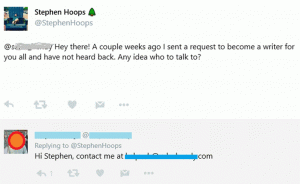
We have become more demanding as consumers due to the amount of information and choices now available to us.
As e-commerce continues to erode the concept of brand loyalty, marketers need to work even harder to stand out. Brands must adapt to stay competitive by collecting actionable data to build a more in-depth picture of visitors to their website.
It may be easy to fall into the trap of trying to appeal to all visitors who share similar demographics such as age and gender. But with 82% of consumers wanting a more personalized shopping experience, the broad brush approach is likely to fail.
So how can you generate insightful data on customers and use it to improve conversion rates?
The simple answer is by creating buyer personas.
Why are buyer personas so important?
Creating buyer personas helps to break down the complexity of the customer data you have gathered through research and analytics into insightful audience segments.
Good buyer personas when researched well, can be an effective lead generation and customer retention tool, but they require time and effort from marketers.
So how do you go about creating them?
Identify and research your target customer groups
If there is not enough actionable data yet, your personas will most likely be based on hunches, instead of evidence. As you begin to utilize analytics tools and research more, your personas will evolve and become more refined.
For startups and smaller businesses who may not have enough data yet, the most effective way to understand your target audience is by analyzing your competitors. Established businesses should already have basic analytics tools, such as Google Analytics set up.
But to gain better insights into your target personas, research is the answer.
By utilizing tools, such as Survey Monkey or simply picking up the phone to your customers and incentivizing this process with a prize draw means you are more likely to get a more accurate picture than hunches and educated guesses.
Here are some things to consider when researching and building personas for your target audience:
- Basic demographics
- Job role and seniority
- Pain points and motivations
The next step is to bring all of the data gathered together, introducing names and images will humanize your previously faceless audience.
Here is an example of how a B2B software company would approach a persona:

The information gathered from your research should enable you to target ads more effectively, but also inform what products and services you should provide that will best meet the needs of your target audience.
Turning personas into customers

With your buyer personas defined, it’s time to build a tailored marketing campaign that best appeals to their drivers and pain points focusing on these three tips to start with:
1. Spend time on your website. Use Advanced Segmentation tools to see how your target buyers interact with your existing site. This will give you a clear picture of whether it is enticing them to stay or causing them to exit, informing you about which areas of your site and content to build upon.
2. Every piece of content you produce going forward, be it blogs, videos, or even emails should address your target personas’ needs, problems, and interests. Generic content, such as an email blast sent to everyone, is unlikely to generate interest or ultimately conversions.
3. Create landing pages for different personas. This will increase the likelihood of lead conversions. Each of your personas will have different pain points and motivations for and it is important to address these factors when building your landing pages.
Buyer personas will not only turn your website into a better sales tool, but will also support your sales team. By leveraging the information gathered from the buyer personas, your sales team can personalize and focus on key drivers and pain points.
It all comes down to personalization
Personalization is more than just a name in an email. The information gathered from buyer personas will focus your marketing strategy to be more about personalization and less about lead generation.
Personalized marketing when done correctly speaks to the customer and genuinely addresses their values, needs and desires, when done badly prospects are likely to walk away and shop elsewhere.
Buyer personas should be a truly collaborative project involving every department. This will not only help focus the business on a common end goal but provide additional insights to refine and evolve personas.
This post originally appeared on Decibel Insight’s blog.
Digital & Social Articles on Business 2 Community(107)
Report Post








